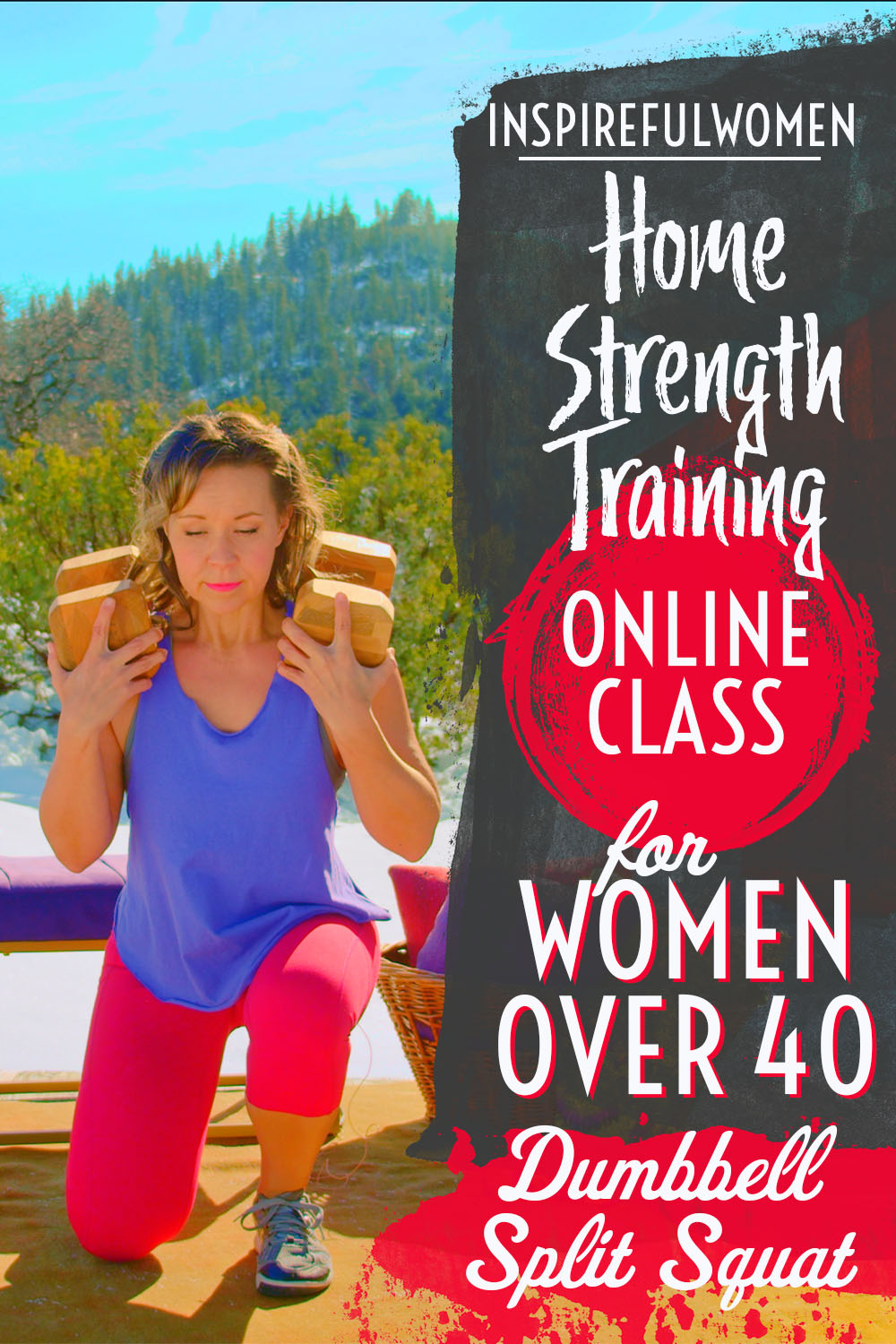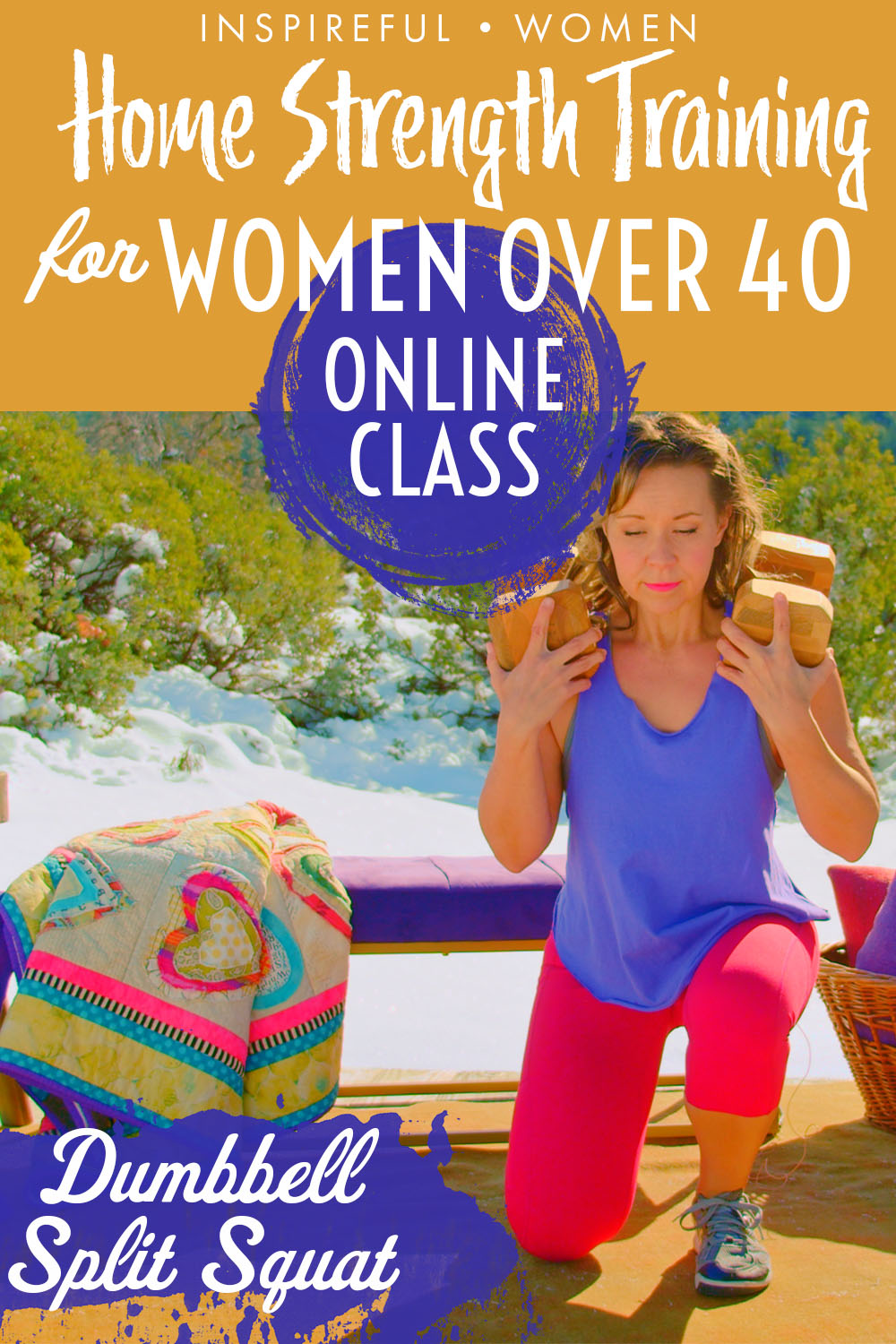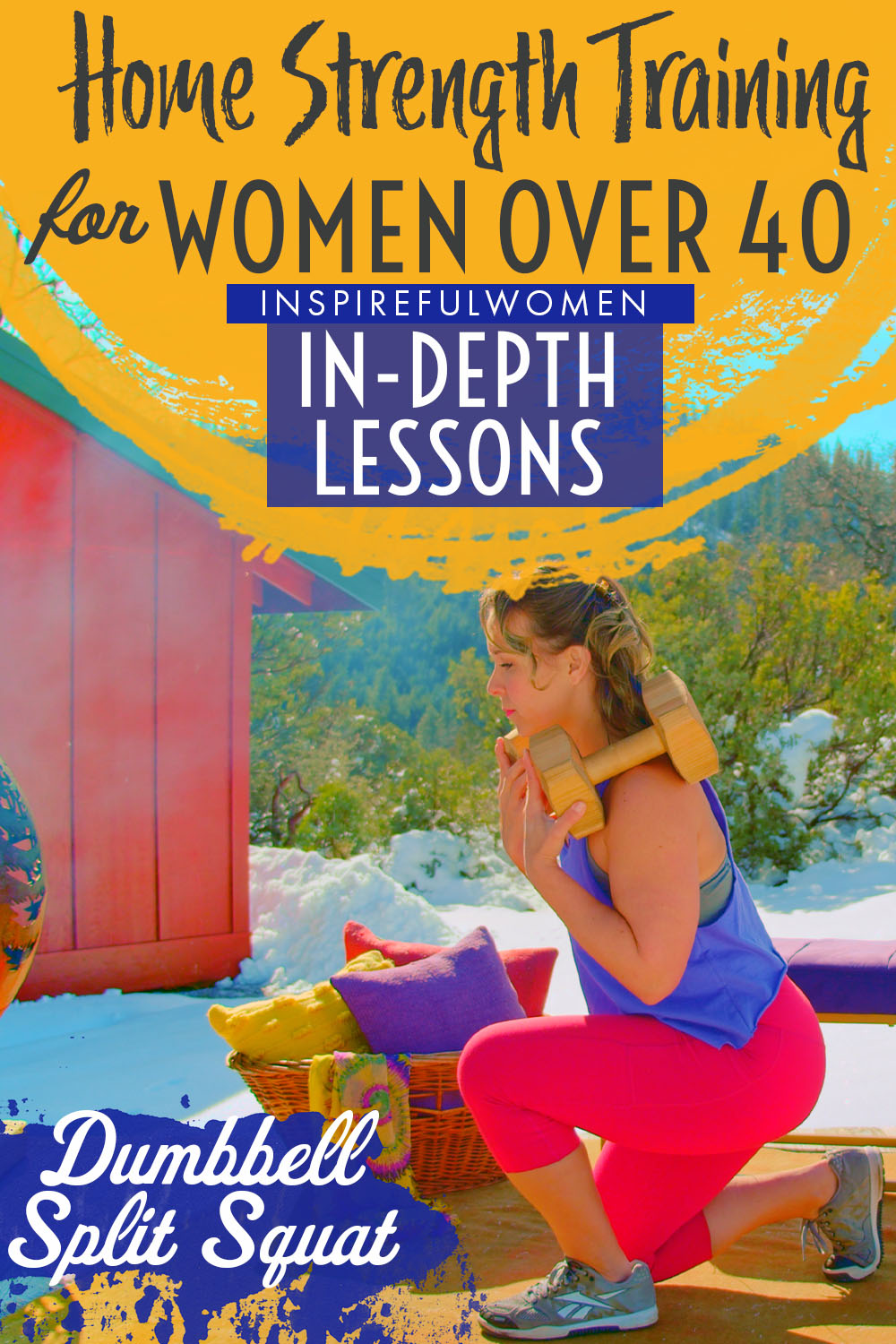Dumbbell Split Squats
How to Do the Weighted Split Squat - Quads & Glutes Exercise| In-Depth Guide [VISUAL LEARNERS] Beginner
Proper Form & Common Mistakes | Home Resistance Training

WHAT DO YOU WANT TO SEE?
QUICK DEMO
QUICK DEMO
MUSCLES THIS WORKS
MUSCLES
MAIN MUSCLES WORKED IN the Dumbbell Split Squat
QUADRICEPS
OTHER MUSCLES WORKED (fyi, tons!):
- GLUTES
- HAMSTRINGS
- DELTOIDS(if holding on shoulders)
- GRIP STRENGTH (if holding weights at side)
- CORE STABILIZERS
- HIP STABILIZERS (adductors and abductors
- SMALLER INTERNAL AND EXTERNAL ROTATORS
- CORE STABILIZERS (transverse abdominis, erector spinae, multifidi, obliques)
- MUSCLES OF THE LOWER LEG for stabilization (peroneals, gastroc, soleus, tib anterior)
STARTING POINTERS
Starting Pointers
WHAT WE'RE DOING TODAY
Other names for this exercise: Squat Variation with Weights & Weighted Split Squat
The Split Squat with Dumbbells is a powerful lower-body exercise that primarily targets the quadriceps and glutes. This squat variation works on unilateral leg strength, balance, and stability. By holding dumbbells in your hands, you add resistance to the movement, making it even more effective for building lower body strength and muscle definition.
Once you can do the bodyweight split squat with good form, you can add some weight to work the quadricep muscles even more. Adding weight makes it more difficult to focus on good form, balance, and control. The dumbbells will increase the eccentric work done by the leg muscles to control the movement as you lower down into the squat and also the concentric activity as you press back up into standing. It might be necessary to limit how far you squat down when you first start to use weight. Make sure that you work on increasing the depth of the squat before progressing the weight. In other words - when you can do a split squat all the way down, it is fine to add some weight. When you add the weight you may not be able to go down as far in the beginning. Continue to work on lowering down as you get stronger. Once you are able to go all the way down with good form, then you can increase your weight. At that point you may need to limit the depth of the squat, and repeat the process. This is the way to build strength without sacrificing form and possibly causing an injury.
HOW TO DO THE EXERCISE
LOOKS
HOW Dumbbell Split Squats SHAPE OUR BODY
Split squats tone our thighs - mostly front, and some back, toned/lifted glutes. Key word, lifted.
This will help give the inside portion of the quads (the medial quad, aka the vastus medalis obliquus or VMO for short ) that “tear drop” shape.
PROPER FORM
PROPER FORM: Dumbbell Split Squats
EQUIPMENT, SETS & REPS
EQUIPMENT
SUGGESTED STARTING WEIGHT FOR WOMEN:
5 - 8 lbs in each hand
SETS & REPS:
2 sets of 8 reps
PACE:
Controlled, can be quicker up and slower down.
BODY POSITION
BODY POSITION FOR THE Dumbbell Split Squat
LEGS: Take a step backward with one leg, keeping about 70 percent of your weight over your front foot (the working leg). The front heel should be roughly 18 inches in front of the toes of your back foot (some variation for leg length and flexibility).
FEET: The toes of your back foot will be on the floor and your heel will be lifted. Toes pointed forward. Front foot flat on the floor.
BODY STANCE: Neutral spine, shoulders, and hips squared to the front. Sternum lifted, shoulders back. Torso over the front leg.
ARMS/GRIP: Hold one dumbbell in each hand with a neutral grip. Curl the dumbbells, one at a time, so that the end closest to you is resting slightly on your shoulders.
HOW TO DO
HOW TO DO Dumbbell Split Squats
CUE: Pay attention to your pelvis - keep it level and squared to your front; and your knee - avoid letting it lean in or out.
Hinge forward slightly (~10 – 15°) at your hips.
Bend at your ankle, knee and hip of your front leg to squat down until your front thigh is parallel to the floor. Your knee will travel forward a bit, over your toes as your weight shifts towards the ball of your foot.
Your back leg will bend at your knee as your shin moves to a horizontal position (parallel to the floor). Stop before your knee touches the floor.
To return to standing, push through your front foot (the weight should be over your ankle and arch) to straighten your knee. Your back leg can help as needed. Stand all the way up so there is no hip crease on your front leg. Leave your back foot where it is, ready for the next rep.
HOW TO SAFELY GET OUT OF THE EXERCISE
At the top of the movement, step forward with your back leg.
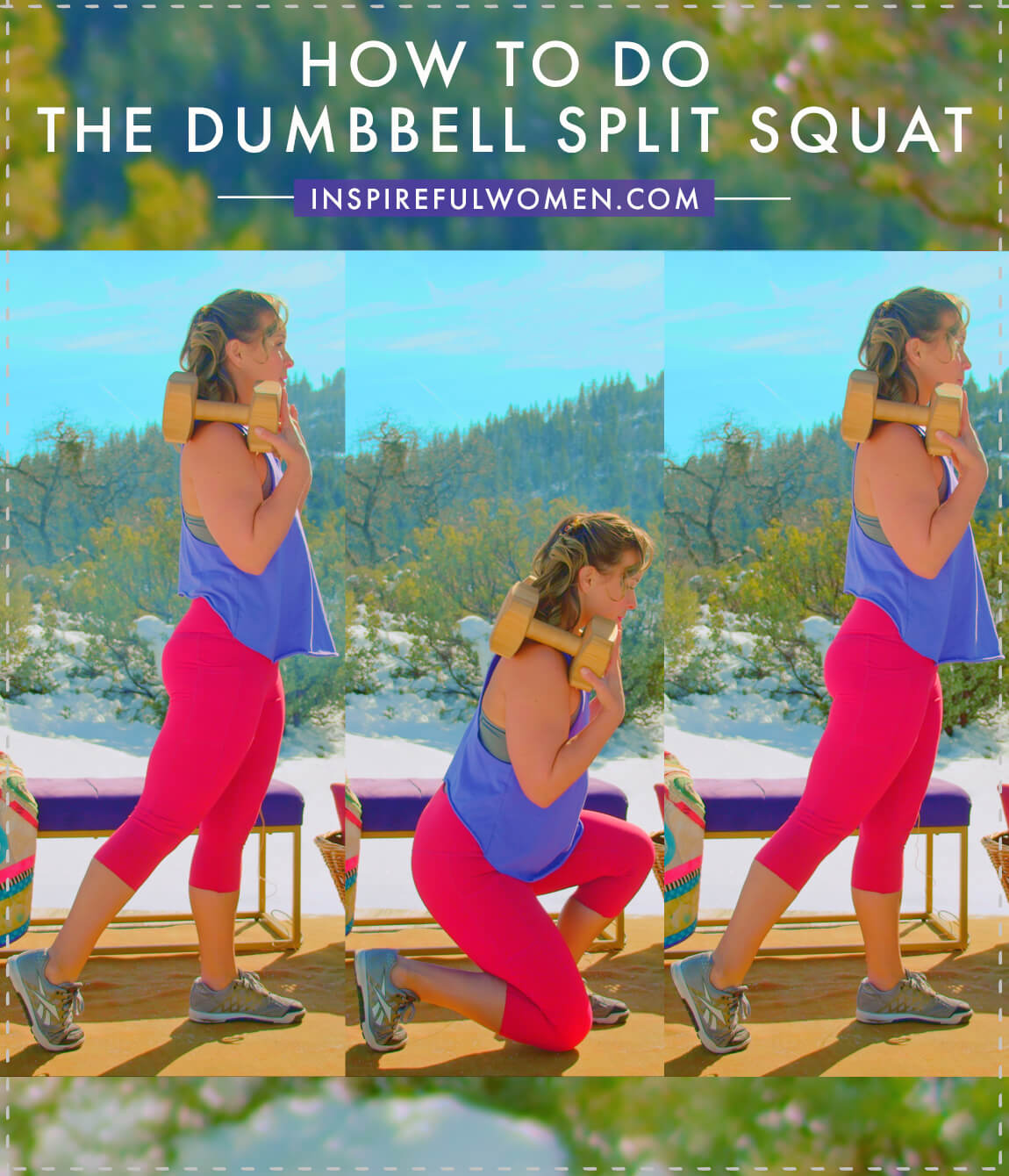
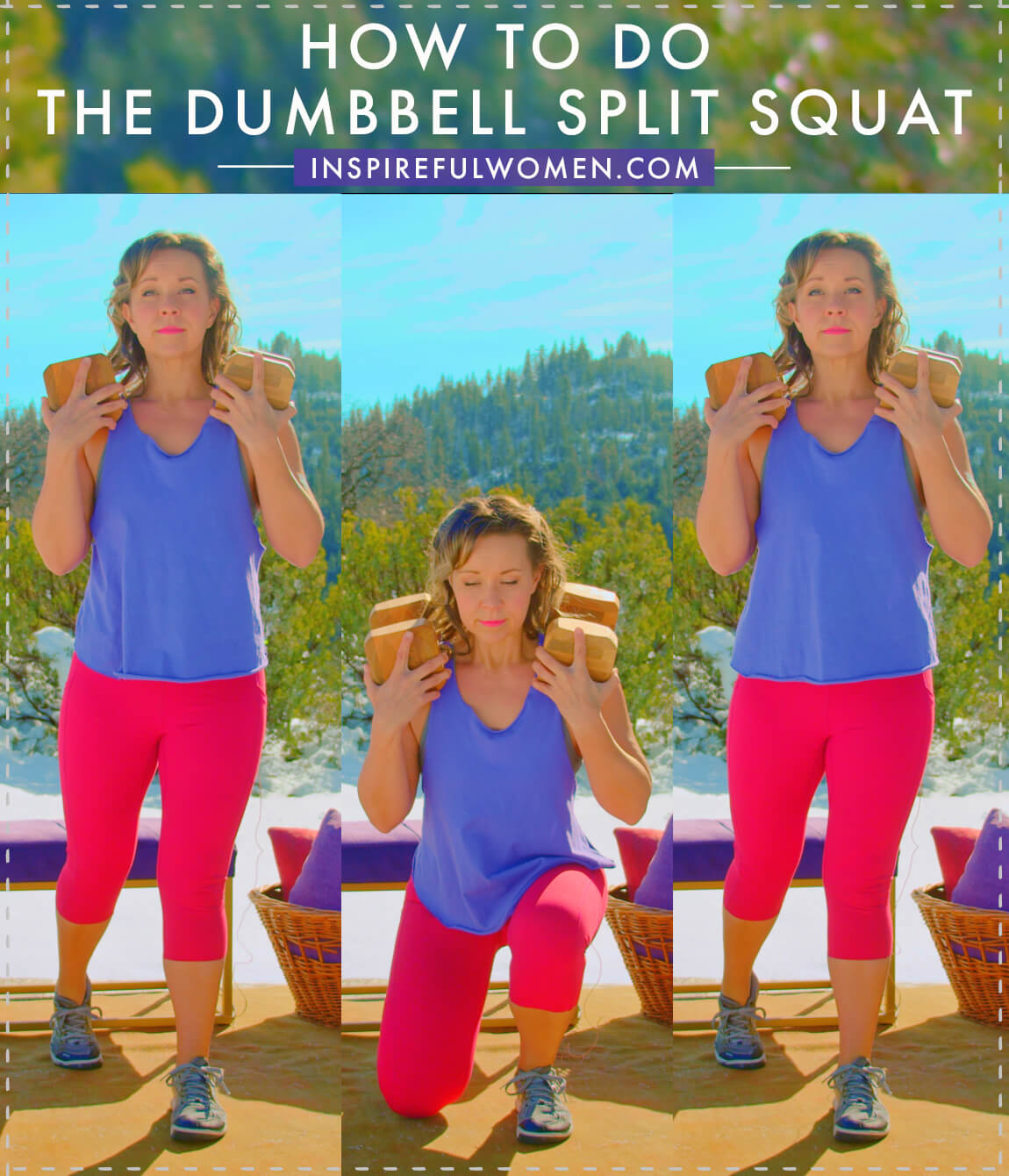

COMMON MISTAKES
COMMON MISTAKES
WHAT TO AVOID WITH THE Dumbbell Split Squat
KEY TIP:
Guess what? Good news! Many avoids are the same for most movements. Once you learn the basics, there's really only a few extra avoids for each individual movement.
1. Avoid letting the hip of the back leg drop as you go down
AVOID: Letting the pelvis on the side of the back leg drop down
WHY NOT?
- When this happens (happens to me a lot) it is the opposite glute medius that is not doing it’s job.
WHAT TO DO:
- Think about pulling IN with the outer hip of the working leg and this will help raise that opposite hip to level. This may take time to create the mind-muscle connection as well as to increase the strength of the glute medius to do this. Often one side will be more of an issue than the other. You can also do some warm-up exercises before you begin your workout that help gets that muscle firing beforehand.
- It helps to use a mirror, or put your hands on the top of your pelvis.
- Another tip: Think about lifting the bottom rib of the working side and moving it over your working hip. That is an old skating tip. It helps get your center of gravity over the working leg. It works really well. Almost like you are shifting your upper body over the leg just a bit to help move the center of gravity away from the non-working leg. The "lifting" is important, almost as if you were stacking it on top of the hip. So no leaning with the torso.
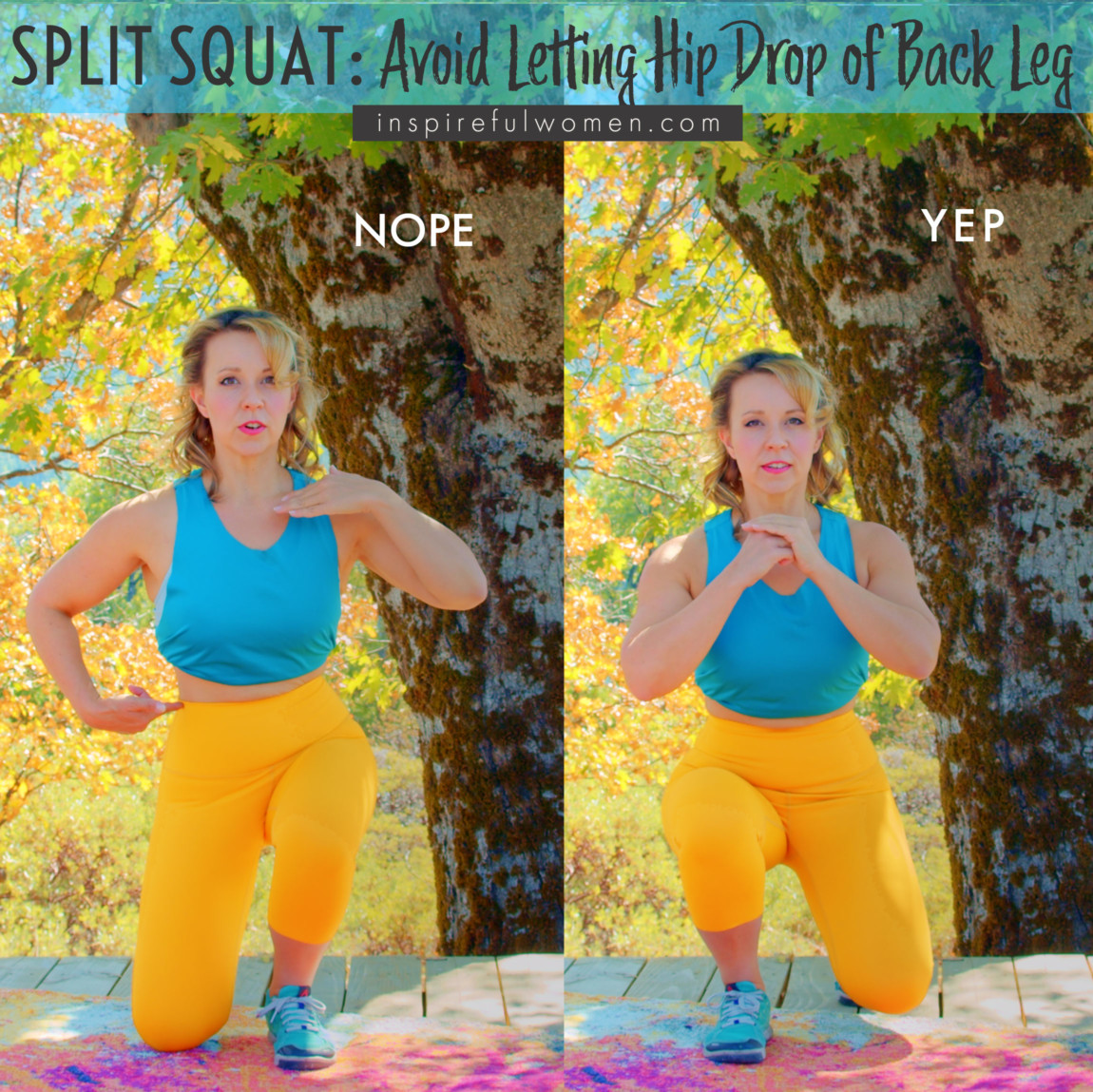
2. Avoid Trunk Collapsing Excessively Forward/Down
AVOID: Rounding the upper back.
WHY NOT?
- This happens when you lean the upper body forward instead of hinging at the hips
- This may stretch the ligaments of the spine and will not strengthen the muscles that hold you in good posture
WHAT TO DO:
- Hinge at the hips to shift the weight forward but keep your shoulders back and your sternum lifted
- You should be able to draw a straight line down your earlobe, shoulders and hips

3. Avoid front knee caving inward or outward
AVOID: Letting the knee collapse in or out.
WHY NOT?
- This puts too much strain on the ligaments on the sides of the knee joint.
- A goal of the exercise is to work the muscles and train the body to move with proper form, this includes the alignment of the leg.
WHAT TO DO:
- Keep the thigh in line with the knee, in line with the lower leg and ankle.
- The center of the kneecap should line up with the second and third toes (approximately)
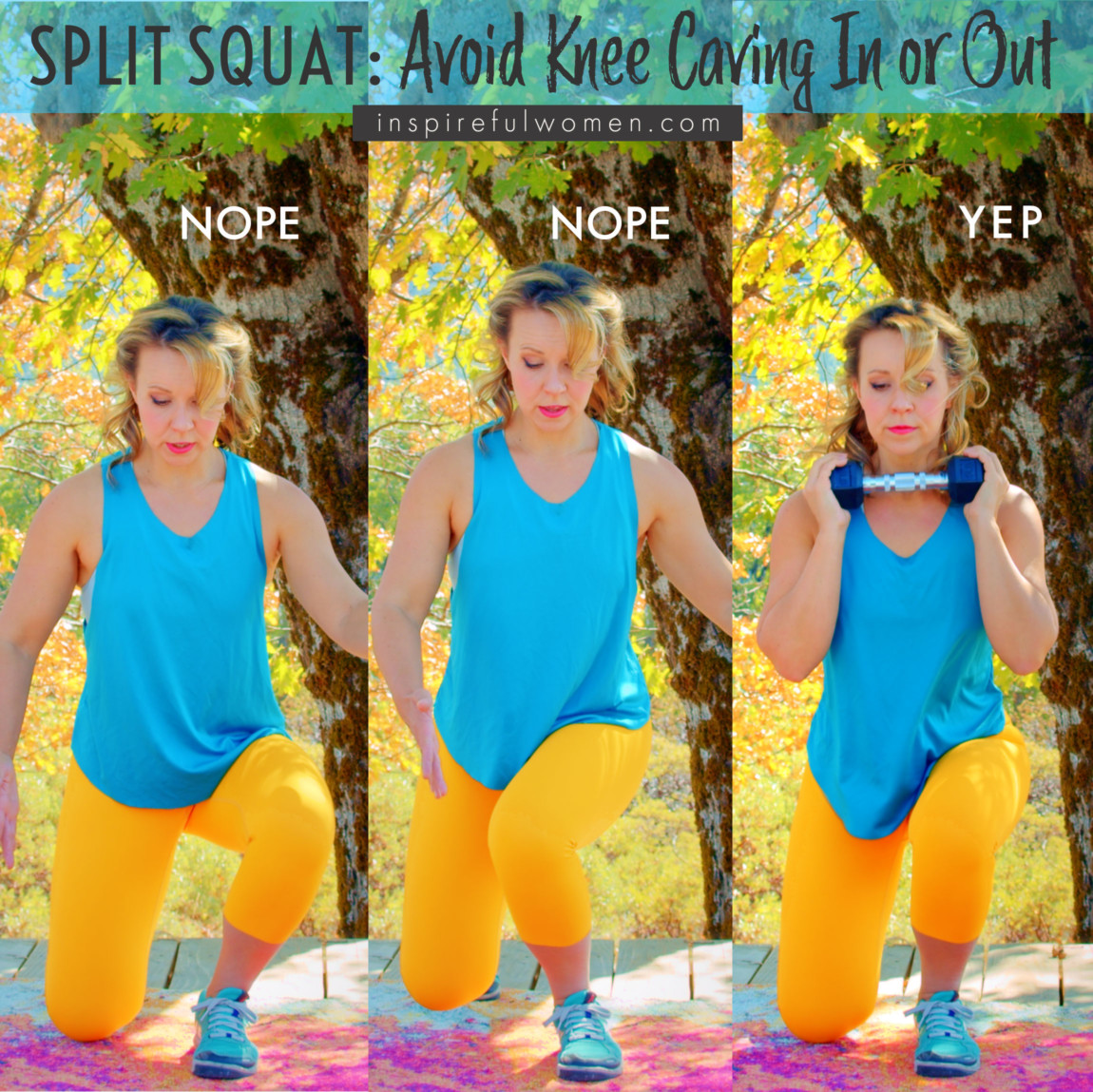
4. Avoid rotating shoulders or pelvis as you lower down/press up
AVOID: Letting the pelvis rotate back
WHY NOT?
- When stepping back to get into position, make sure that your pelvis does not rotate back with the leg
- A goal of this exercise is to strengthen the muscles of the hip and pelvis, letting the pelvis rotate back will decrease the activity of the hip and pelvic stabilizers.
WHAT TO DO:
- Keep your pelvis squared to the front the entire time (more likely with a narrower stance- try adjusting how far apart your feet are in width if you’re struggling with this).
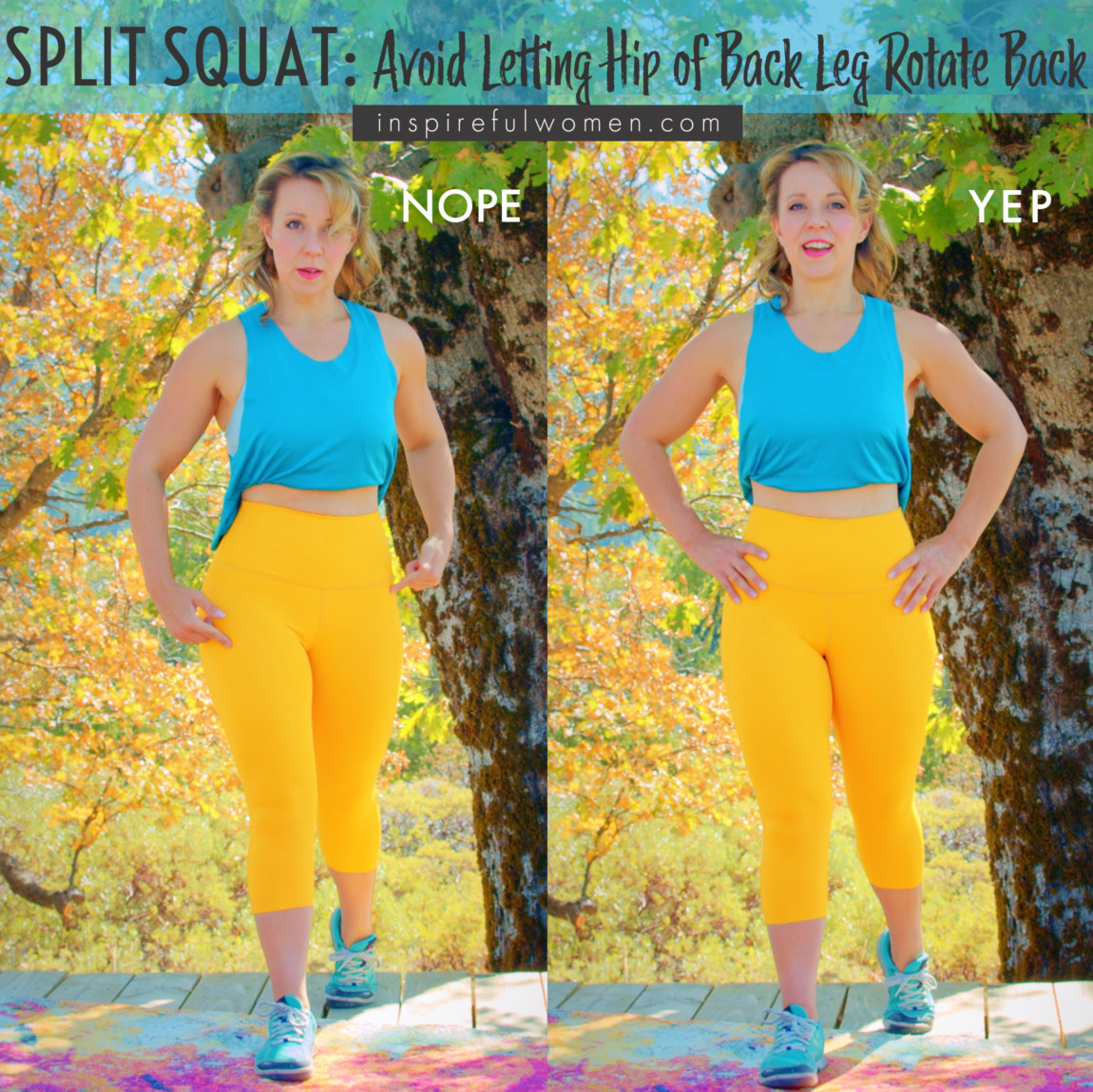
5. Avoid Stopping short at the top
AVOID: Not straightening the working hip at the top of the movement
WHY NOT?
- This will decrease the activity of the gluteus maximus muscle and will not move the hip into a neutral position.
WHAT TO DO:
- There should not be a crease in the front of the hip at the top of the movement.
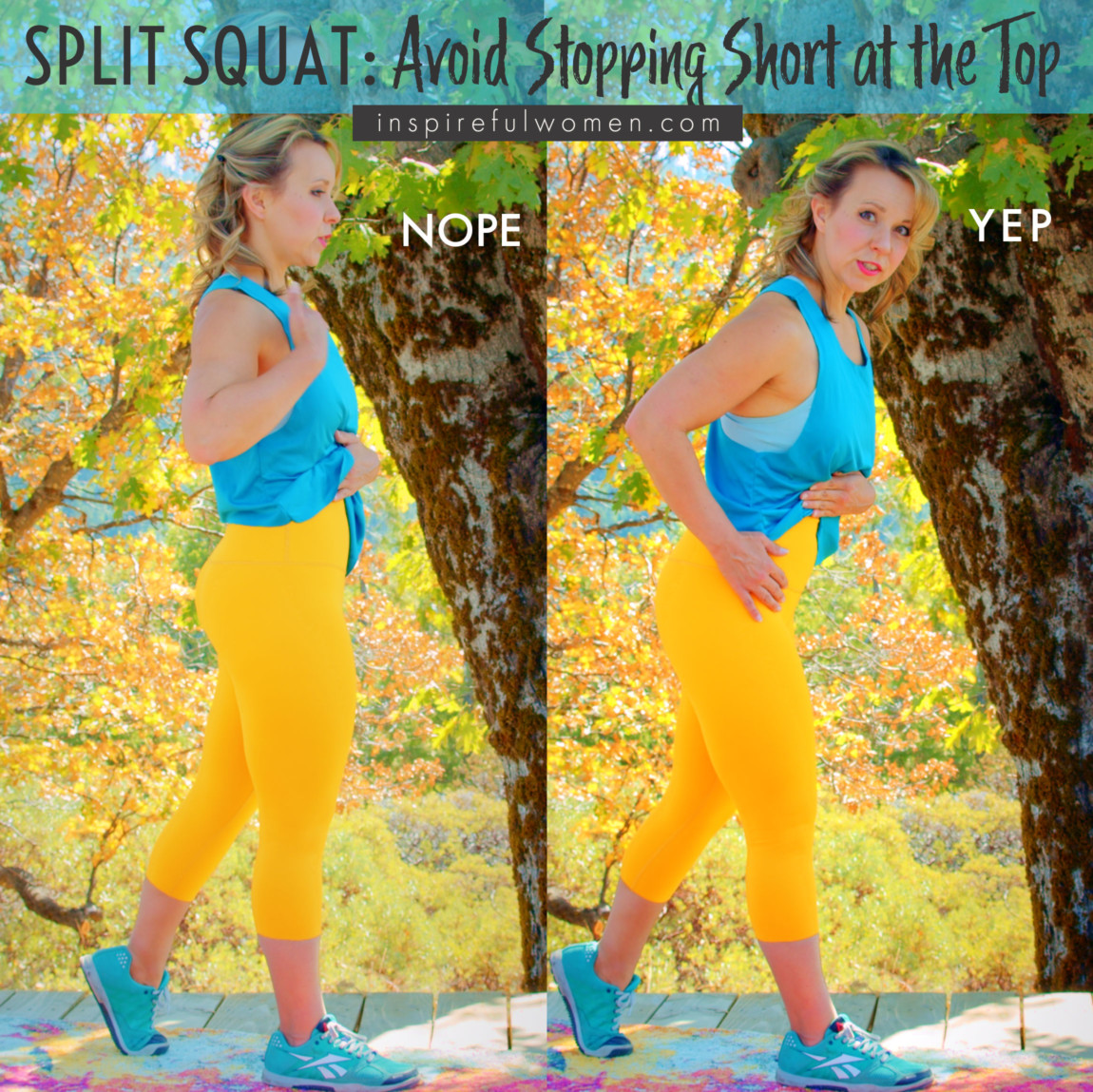
6. Avoid dropping elbows down
AVOID: Dropping elbows down (if weights are being held on shoulders) or rounding of the upper back.
WHY NOT?
WHAT TO DO:
- Keep your shoulders back and elbows in front.
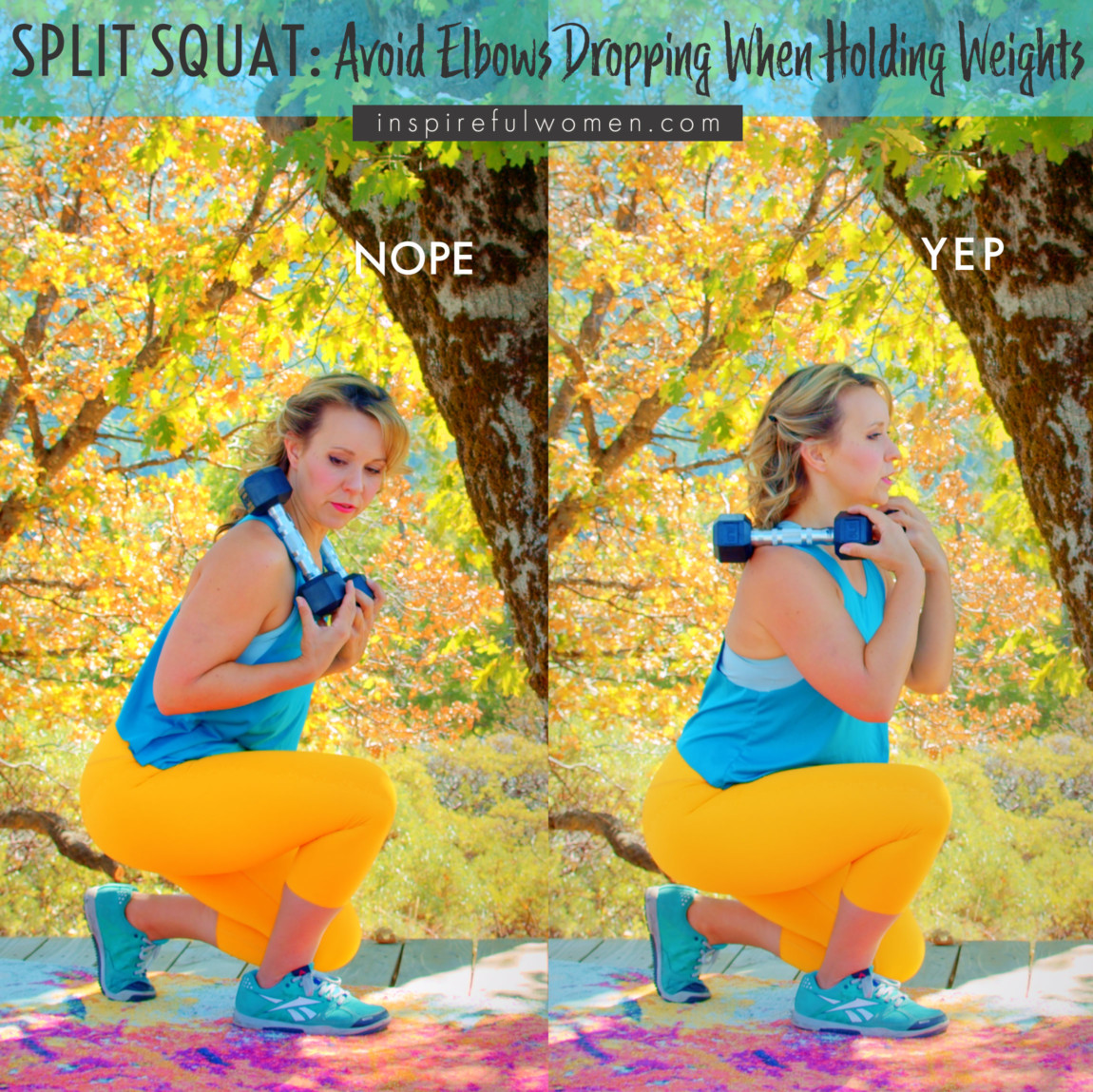
WHAT WE'RE DOING TODAY
WHAT & WHY
BENEFITS OF TRAINING THE QUADRICEPS
WHAT
WHAT WE'RE DOING TODAY
WORKING OUR QUADS
The split squat will work the largest muscle group of the thigh, the quadriceps muscles. The movement is done in a standing position with one leg behind the other, in a split stance.
IF YOU'RE SCARED YOU WON'T HAVE THE BALANCE FOR THIS:
Never fear ladies! You are not alone first of all, and I will show you some simple ways to do this movement while keeping your balance so you feel safe. One is simply to do this with one hand resting on chair or table to your side. See all the make easier options here.
WORKING ON BALANCE
I'm talking about the helping-me-not-fall-over type of balance, not work/life balance. 😉
In addition to working the thigh muscles, this exercise is also good for your balance (if you don't raise your hand when I ask who needs help with this like me, you're either not over 40, or you are over 40 but you're an athlete, in which case this is probably not the site for you).
The exercise works the front leg the most - especially the front of the thigh (quadriceps) and the muscles of the side and back of the hip (gluteals). You will bend the ankle, knee and hip of the front leg to lower yourself down until your thigh is parallel to the floor. Even though you will really feel your thigh muscles of your front leg working, this exercise is also good for your balance, and all of the muscles of the leg that help to strengthen your ankle, knee and hip.
WHY BOTHER DOING IT?
WHY
WHY DO WE EVEN CARE?
This exercise is done with both legs but it is used to help you improve the balance, stability, and strength of a single leg. Training one leg at a time has a lot of benefits.
EQUALIZE THE STRENGTH OF EACH LEG
Having one leg that is stronger or more stable than the other leg can cause you to use the legs differently without being aware of it - you begin to favor or compensate for the weaknesses. And many of us do commonly have a stronger and weaker side. For me, my right leg is my stronger leg.
When we have this imbalance, we may begin to use one leg more than the other when going up and downstairs, getting up off of the toilet, or squatting down. Or worse yet, we begin to avoid squatting down, we may notice that we are “pulling” ourselves up the stairs on the handrail, or we begin to push ourselves out of a chair using our arms. Over time the leg will get weaker because it is not being used as much.
Our arms are much smaller than our legs so doing jobs with our arms that are supposed to be designated "leg jobs" is a jerry-rigged idea.
So I guess we can say one reason to do this sort of exercise is so that we don't turn leg jobs into arm jobs.
Training each leg separately allows us to notice "oh, wow I can easily do 10 reps on this leg, but my other leg can barely eek out 6 reps" even though you're even mentally cheering it on like 'c'mon leg, you can do it, rep 7 here we go, let's get after it!'
Once we're aware of this difference, then we can purposefully spent a little extra time doing more sets with the weaker leg to bring it up to snuff.
IMPROVE OUR BALANCE
Single leg training will challenge your balance. Our balance tends to get worse with age, this is just a fact says Carol, the physical therapist whose taught me everything I know.
Tell me about it Carol. I could see it getting worse, but even just turning 40 myself, things are all well and good on nice even ground, but the second there's a crumb under my foot it's like watch out floor.
If you're in your 60's you might be like "Rayzel, even if there's no crumb, I still practically die if I don't have both my feet under me."
We are going to change this ladies! You and me both.
The good news is, you can easily improve your balance by working on it. A well-designed exercise program will include single-leg movements to challenge your balance.
IMPROVES JOINT STABILITY
Single leg exercises help to improve the stability of our joints. An unstable joint has too much movement. This movement can lead to damage to the joints - like osteoarthritis (or OA).
It is important to work the muscles that cross the joints and keep them stable. The split squat is a really good exercise for strengthening the muscles that cross the ankle, knee, and hip.
HEATHY, STRONG QUADS = HEALTHIER KNEE JOINT = LESS KNEE ISSUES
The quadriceps are responsible for the health of your knee joint.
The kneecap is actually IN the tendon from the quadriceps muscles. The muscle guides the kneecap in a little groove that it moves in. If the muscles of the quadriceps are not trained to hold and move the kneecap correctly - it can cause damage to the back of the kneecap.
Split squats are perfect for training the quadriceps to move the kneecap correctly.
SPLIT STANCES ARE COOL
Split stance positions are a great way to make exercising our leg muscles at home effective, without having to use super heavy weights at the gym in order to fatigue the muscles.
Because our larger lower body muscles are just so.....well, large, they are naturally pretty strong, and that can make it a challenge to find ways to fatigue these muscles at home without those heavier weight. The split stance really helps with this, because we have a lot more of our bodyweight on one leg now (ie the "heavy weights we are using is not a machine or large dumbbells, but rather our own bodyweight now!), rather than both legs spreading our weight equally. This position is also a great segway to eventually being able to do single leg movements.
The split squat exercise works the front leg the most - especially the front of the thigh (quadriceps) and the muscles of the side and back of the hip (gluteals).
You will bend the ankle, knee, and hip of the front leg to lower yourself down until your thigh is parallel to the floor (so we have 3 joints moving around here!) That means we're doing a compound exercise. Compound exercises can take a little more work to learn properly because we're moving in multiple places on our bodies, BUT they are great to do because they work more muscles at one time.
EVERYDAY LIFE
EVERYDAY LIFE &
MUSCLE FUNCTION
HOW WE USE OUR QUADRICEPS IN EVERYDAY LIFE
1. STRAIGHTENS THE KNEE & CONTROLS THE MOVEMENT WHEN WE BEND OUR KNEES
In more formal terms, the quads extend the knee, and helps eccentrically decelerate/control the action of our hamstrings flexing the knee.
- Getting out of a chair, off the toilet
- Going up and down stairs
- Walking
- Squatting
- Lifting heavy objects/kids from the floor
- Getting up and down from the floor/kneeling
2. STABILIZES OUR KNEE JOINT
- During all standing and walking activities
3. ONE OF THE QUAD MUSCLES HELPS US BEND THE HIP
Quad means 4 right? And one of the muscles that the quadriceps are made up of is called rectus femoris (who thought of this terrible name?) This particular muscle also crosses the hip joint on the front of our body, so therefore it also helps us bend at the hip joint
- Marching
- Getting into a car
- Going up stairs
HOW TO FEEL WHAT MUSCLE IS WORKING
How to Feel What Muscle is Working
Put your hands on your thighs and squat down (just a partial squat will do). You should feel the muscles on the front of your thighs contract.
SCIENCY STUFF
SCIENCY STUFF
SPIFFILICIOUS FACTS ABOUT MUSCLES & MOVES
This movement can be used to progress from two-legged movements, such as squats, towards single leg movements will help to improve balance, control and strength. Progressing from double to single leg exercises has two great benefits. It can increase your ability to lift more with the double leg exercises by ensuring both legs are working equally, also it is a great progression to single leg exercises which are more functional and improve balance, stability, core strength, since we do most activities with more weight on 1 leg than another or only 1 leg.
Double leg exercises are great for building a lot of muscle but not very good for balance, stability. And let me just speak for all us over 40 women - we need help with balance and stability these days amiright?
Doing the split squat is a good way to work on transitioning from two legs to one leg.
Beneficial for identifying asymmetrical strength differences between left and right legs.
ALLLL MUSCLES & WHEN
ALL MUSCLES WORKING & WHEN DURING THE Dumbbell Split Squat
The core muscles will work throughout the movement to hold the spine in a neutral position. To place dumbbells at the shoulders: the biceps contract concentrically to bend the elbows.
The working leg (front leg) quadriceps and the gluteus maximus work eccentrically to control the downward pull of gravity as you bend the knee and hip bend and the body is lowered towards the ground. The muscles of the lower and upper leg work to stabilize the hip, knee, and ankle joints to hold the leg in good alignment.
To return to standing the gluteus maximus and quadriceps begin the movement by extending the hip and knee (straightening), as the body is pushed up, the hamstrings help to extend the hip and the gastroc to pull the lower leg back.
The muscles of the back leg work to take some of the weight off of the working leg (front leg) and to help with balance and stability.
PIN IT FOR LATER!
